Shrimp farming in the USA is a form of aquaculture business related to farming for consuming various species of prawns and marine Shrimp. The USA is the second-largest consumer of prawns after China. In the country, Shrimp are among the most eaten seafood, accounting for about 25% -30% of the total seafood market in the country. Let’s check out more information about Shrimp farming in USA.
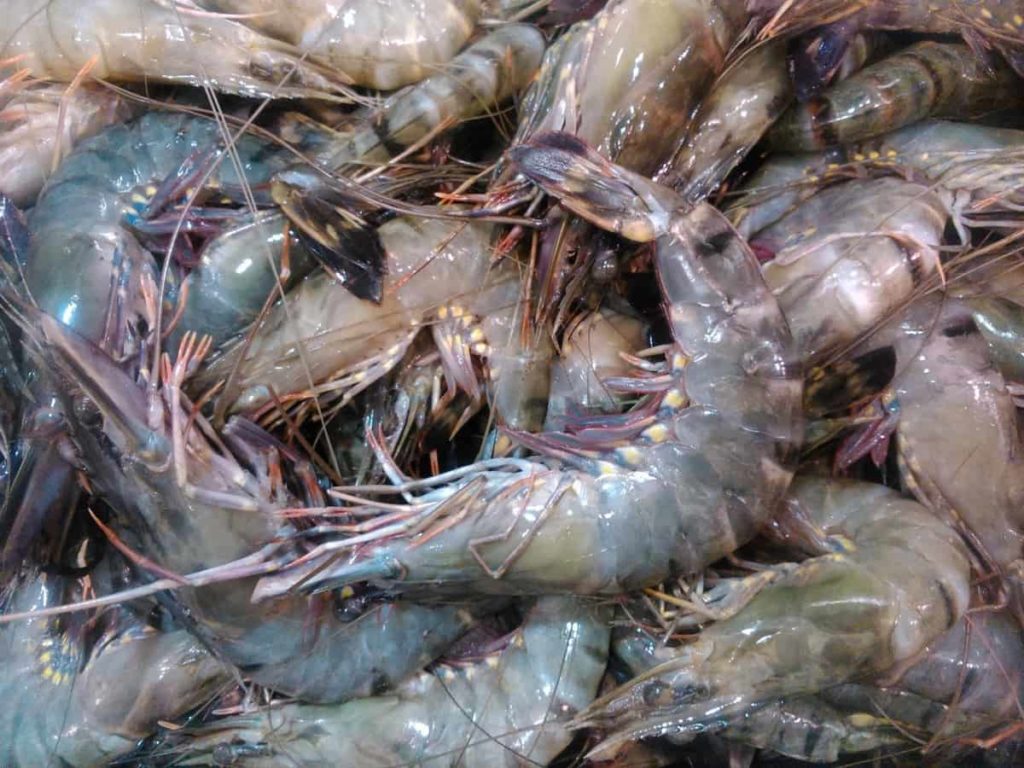
Shrimp farming importance in the USA
Commercial prawn operations have been around the United States since the late 1960s when a company in Florida bought the rights to use modern farming methods developed by a researcher in Japan. But initially, farms were limited to the southern states and Hawaii because prawns needed to be raised in ponds where the climate was hot, and saltwater was plentiful. To shift Shrimp production inland to rural areas like Indiana, however, the industry had to make some significant technological leaps.
Marine Shrimp have a complex life cycle, requiring a variety of foods and environments as they mature from larvae. To help producers move from farming in outdoor ponds to indoor tanks, researchers need to identify and mimic the natural environment of prawns, nutritional requirements, and water quality required to produce healthy prawns. In addition to raising and exporting only high-quality prawns in tanks, prawn aquaculture supports many ancillary industries that have become heavily dependent on this industry.
These include the industries of equipment, chemicals, transportation, equipment, marketing, pharmaceuticals, and research and development. According to industry observers, Shrimp farming is starting in both the interior and coastal regions of the United States as commercial and old-fashioned fish farmers are taking advantage of rising consumer demand and increasing import prices for Shrimp. About 90% of the prawns used in the United States are imported from abroad.
More consumer awareness of where their food comes from would provide more opportunities for domestic prawn breeders. Due to the increasing consumption of prawns in the United States, reasonable prices of imported products, and recent concerns over food security, interest in prawn farming is growing in the coastal and inland United States.
In case you missed it: Making 60 Lakh Per Year from Prawn/Shrimp Farming – A Success Story of an Aqua Farmer
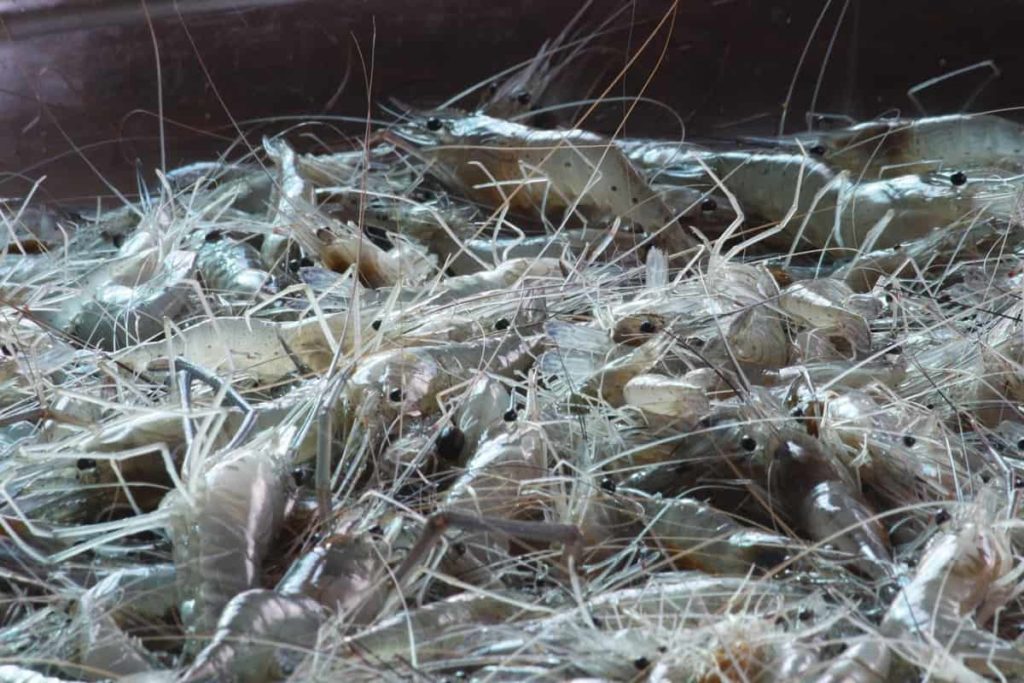
Howard Turney, a pioneer in the industry, set up a prawn farm outside of Chicago in 1981 and made history as one of the first American farmers to grow prawns in artificial seawater systems. Since then, many farmers have tried their luck with indoor prawn farming. Some have failed, while others have succeeded and become a source of inspiration for future farmers. And that’s why the Shrimp mark is prominent in the middle of a small Midwest town near a non-scripted barn.
Shrimp farming states in the USA
The states of Hawaii, South Carolina, Kentucky, and Florida had the highest surface acreage dedicated to prawn production. Excitement for the possible cultivation of freshwater prawns has persisted in the United States for almost five decades but has not yet materialized. Initial efforts to achieve commercialization seem to have failed, largely due to a lack of understanding of managing this species of caridean Shrimp.
In Hawaii, for example, producers were experiencing production declines based on harvesting and replenishment methods that did not suit the social biology of the species. In addition, post-production problems were caused by insufficient information about marketing and marketing strategies. The development of the freshwater prawn industry in the United States seems to have finally reached a critical crossroads. This species’ beneficial culture and marketing features maintain attention to this species.
Unlike marine Shrimp, it has a special breed in addition to controlling the temperature to close the life cycle and requires no need for stock management. The growing interest in domestic production of prawns is based on the growing trade deficit in the United States due to a gradual but steady increase in seafood consumption. Imports of all prawns in the United States exceeded 454,000 metric tons (MT), most of the seaweed. In addition, prawns have recently overtaken tuna as the seafood product with the highest per capita consumption in the United States.
This demand is strengthened by the growing awareness of the sometimes uncertain quality of American fishery and imported farm-raised Shrimp. Rising environmental awareness has forced consumers to seek information on whether sustainable farm practices are followed. In addition, with a strong commitment to US homeland security, seafood imports could be subject to further regulatory scrutiny. These conditions have created an attractive environment where commercial freshwater prawn farming can be achieved in the United States.
In case you missed it: Organic Shrimp Farming – Prawn Production Practices
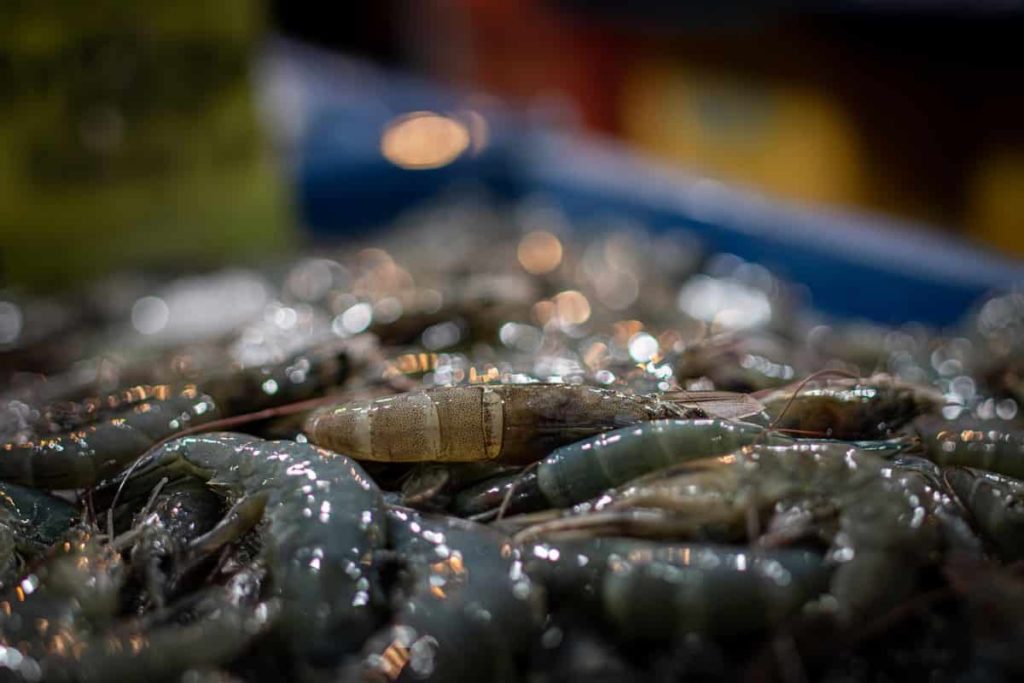
Site selection, pond construction, and water supply
Land prices vary widely, such as pond construction costs, which can be up to $ 5,000 per acre. In the traditional aquaculture areas of the United States, however, the construction cost of the pond is $ 1,200 to $ 3,000 per acre of water. Generally, ponds used for prawn farming are small, with less than 2 acres. Fodder can be distributed more evenly in a small pond than in a large pond, which is essential because prawns do not accumulate in feeding places.
Some producers cultivate prawn culture by converting existing farm ponds into aquaculture for extra income. However, experience has shown that ponds designed for Shrimp production (with catch basins) are easier to manage and harvest and produce more prawns than typical farm ponds. Well, water is best for aquaculture. If small ponds need to be filled with rivers and drains, water screening should be done to prevent predatory prawns should be treated to remove contamination before storage.
Different Shrimp species in the USA
- Brown Shrimp – The majority of American domestic Shrimp are brown Shrimp. When raw, they have a light brown tinge but don’t worry, they turn shiny, Shrimpy pink when cooked. Brown Shrimp have an earthy taste compared to other types.
- Pink Shrimp – Pink Shrimp are mainly caught off Florida’s Gulf Coast. They are plump, meaty, and versatile. Find them, usually frozen; the frozen Shrimp can be a great choice throughout the United States that gives markets and consumers great flexibility; find flash-frozen varieties for the best quality.
- Maine Shrimp – Most Maine Shrimp are small cold-water Shrimp, like the Oregon Pink Shrimp. They’re great for Shrimp salads, Shrimp cocktails, and soups.
- Oregon Pink Shrimp – The Oregon Pink Prawn is one of the best-tasting prawns from the well-organized fishing off the coast of Oregon. Like prawn fishing in Florida and Maine, Oregon follows an environmentally sustainable approach and strict climatic and catching limits.
- Royal Red Shrimp – Royal Red Prawns have been caught in the Gulf of Mexico. These are deep-water prawns that taste like lobster.
In case you missed it: Biofloc Shrimp Farming (Prawn) – a Full Guide
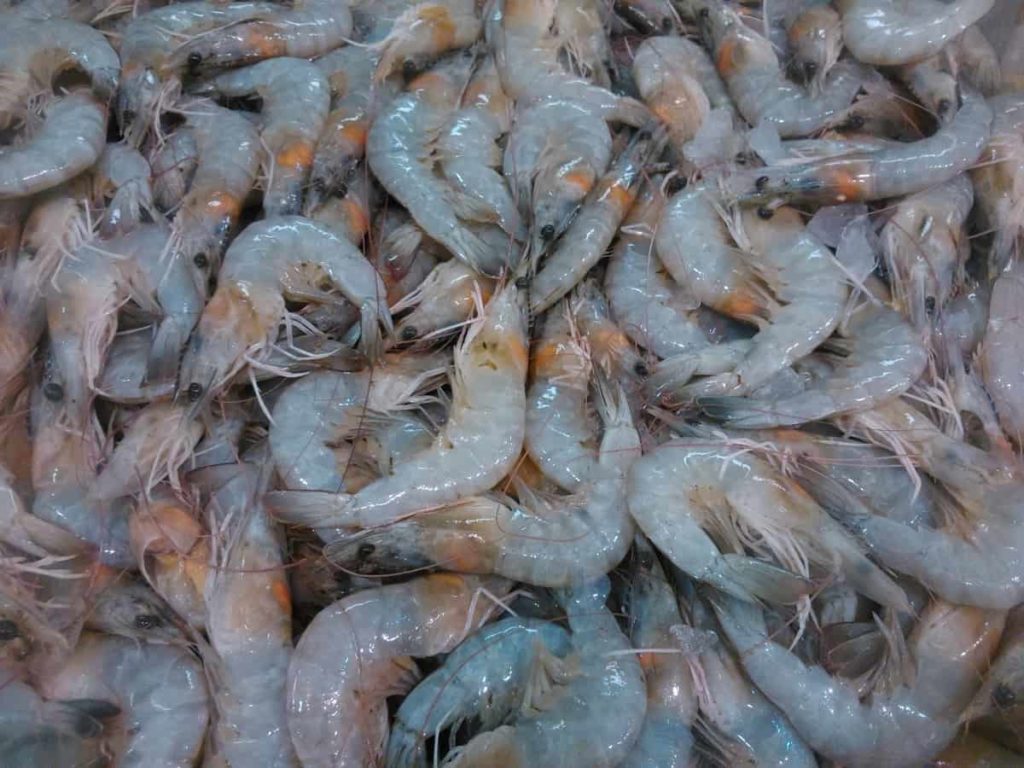
- Spot Prawns – Despite their name, spot prawns are biologically prawns. Caught along the west coast from Santa Barbara to British Columbia, spot prawns are a limited but well-organized fishery. They are sweet, buttery, and expensive. They can be difficult to find because restaurants will find prawns everywhere they can find them.
- White Prawn – The White Prawn tastes like a clean and classic Shrimp, with a perfectly nuts edge. White prawns are found from Fire Island, New York, to St. Lucie Inlet on the Florida Atlantic coast. They are found in the Gulf of Mexico from the Ochlochonee River in Florida to Campeche in Mexico.
Equipment needed for Shrimp farming in USA
Equipment required for prawn farming includes electric aerators, a 5-hp water pump, a feed storage area, a water quality kit, a dissolved oxygen meter, harvesting equipment, a pick-up truck, a mower, and artificial substrates. Harvesting and storage equipment includes seines, baskets, tanks, and oxygen cylinders. Farmers who use large ponds may also need feed broadcasting equipment and several vehicles.
Shrimp production methods
Freshwater shrimp are produced in three stages – hatchery, nursery, and grow-out. The fertilized adult female prawns lay 10,000 to 20,000 eggs in the hatchery stage, which hatch into prawn larvae at three weeks. Newly hatched larvae are kept in brackish water where they need protein-rich foods such as zooplankton.
After 22 to 30 days, the post-larvae can be stored in freshwater. Post larvae are usually reared for at least another 30 days. The juvenile prawns are then ready to be stored in ponds for growing adult prawns. Shrimp production parameters are;
- Storage density (number of juveniles per acre of water stored)
- Seed age at a storage
- Feeding or fertilization rate (pounds per acre per year applied to prawn pond)
- Feed types, and
- The presence of artificial substrates.
Prawns are tropical animals and need warm water above 65 F to grow. In the temperate regions of the US, the period from juvenile to market size is four months (June to September). Shrimp pond culture is done in an annual summer and early fall consignment. Proper management of the pond is a crucial factor in product success. Juvenile prawns are usually stored in late May or early June and feed 32% crude protein sinking feed.
Market analysis
The market is based on the numerous health benefits offered after using the United States Shrimp Market product, such as the prevention of numerous chronic health diseases, many chronic health diseases, and good HDL cholesterol in the human body. In addition, the United States is seeing an increase in demand for simple and value-added products, such as cooked prawns, tempura prawns, breaded prawns, and prawn paste, which require minimal cooking, which helps further market growth.
In case you missed it: Shrimp RAS Farming in India – A Full Guide
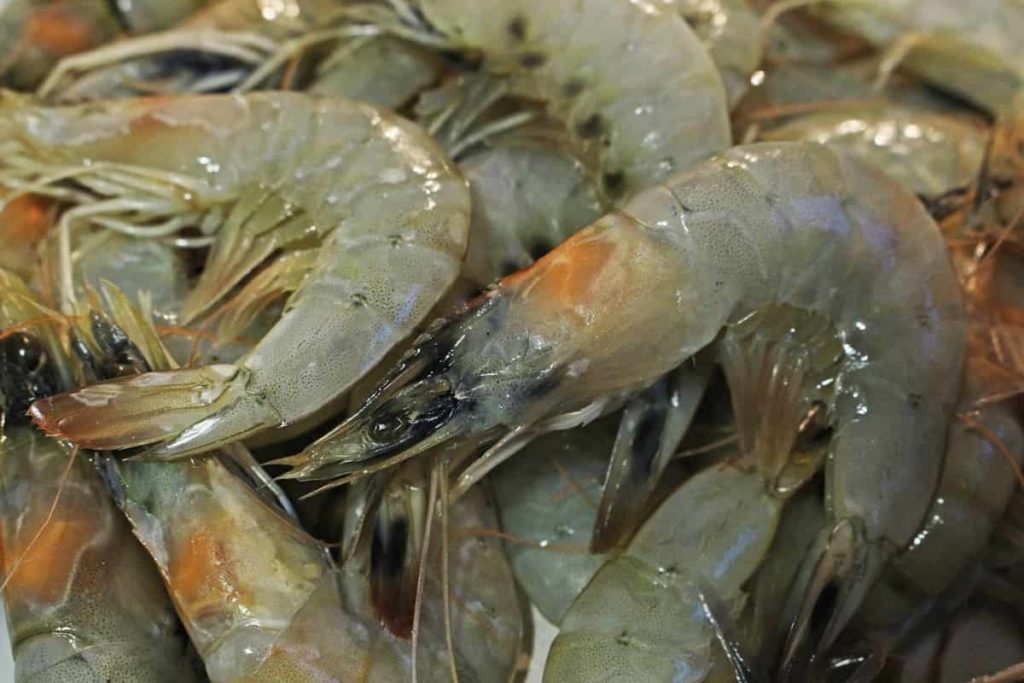
They are being added to more foods by health-conscious consumers as they are low in calories and carbohydrates. The production of freshwater prawns raised in the fields will never meet consumers’ demands, which can only be met through imports. However, there is a place for the product in the US market. In this new phase of American freshwater prawn farming development, pond bank sales play an important role.
At this level, no price structure based on size is followed. High production of small prawns can be economically attractive, especially for farmers who grow crops in small 0.20 to 0.40-hectare ponds where topography guarantees this approach. Production is important in these circumstances, but wholesale prices, that exceed breakeven levels, will need to be sustained as production volumes increase.
With higher production of small prawns, there is little scope to reduce purchase prices and maintain a positive net profit. The long-term success of Pond Bank sales can be best achieved through planning in conjunction with annual festivals that include a variety of entertainment.
Shrimp farming industry challenges
The prawn farming industry faces numerous challenges globally, the most important being various viral, bacterial, and fungal diseases; also, the need for additional, new components that will be needed to meet and support the growing demand for aqua feed; and the environmental impact, market, and investment issues.
Diseases and aquafeed components are undoubtedly the Shrimp industry’s most critical challenges. Different diseases will continue to be relevant drivers when production has quadrupled, despite facing various serious diseases. The industry will continue to learn how to manage and cope with the disease as it grows globally.
A certain amount of additional ingredients for aqua feed will be generated from the increased productivity of established suppliers, such as increasing the production of existing key components such as various land-based activities such as agriculture, soybeans, and other crops, processed animal by-products, and new ingredients such as bacterial products, insecticides, and others.
Feed components have several advantages over other sources of land-based production, as significant planning and control are possible, and land-based agriculture is expandable, sustainable, responsible, and certifiable.
Government support
The US government’s support for aquaculture producers “on rare occasions.” One producer was the USDA Trade Adjustment Assistance Program, where he participated as a Business Planning Specialist.
Another producer was the USDA Marine Shrimp Farming Program at the Oceanic Institute in Hawaii. The program was an integrated multinational research consortium that “developed and developed the technologies, products, and services necessary for the domestic prawn farming industry to become competitive in the global market.”
Frequently asked questions about Shrimp farming in the USA (FAQ)
Are there any Shrimp or Prawn farms in the United States?
Florida, Texas, and Alabama are just a few Shrimp farms. There are a few farms off the coast in Alabama that are using saline groundwater. They are watching the Shrimp grow in the catfish ponds with salt water. There are a few small Shrimp farms that are doing indoor culture.
In case you missed it: Shrimp Aquaculture in India – A Full Guide
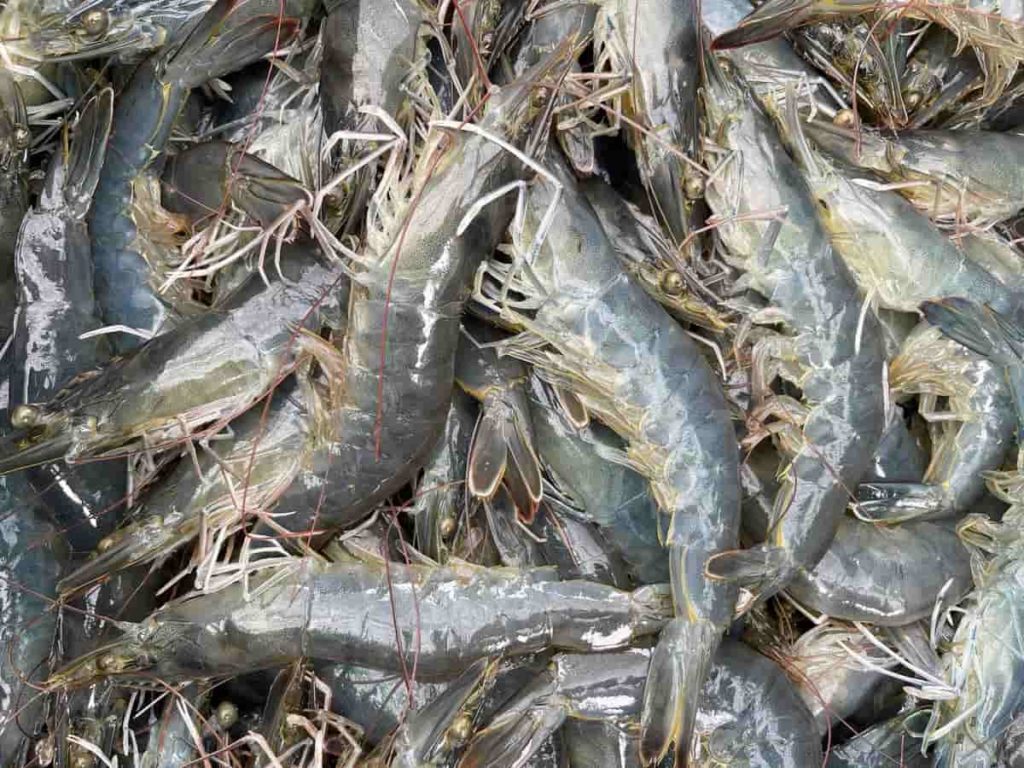
Where is Shrimp farmed in the United States?
Texas is the largest producer of farmed prawns in the country, producing about 2 3.2 million. Alabama is in second place, dropping production by 304,572 pounds this year.
Is Shrimp farming profitable in the United States?
Shrimp farming is a lucrative business in the aquaculture industry. It is a multi-million-dollar industry today.
Where is Shrimp found in America?
Wild American Shrimp catch prawns on the Shrimpers off the Gulf and the South Atlantic. The main Shrimp production areas are Texas, Louisiana, Mississippi, Alabama, Florida, Georgia, South Carolina, and North Carolina. Shrimp grow naturally in these waters, and their presence has affected the way of life in these states.
Where do most Shrimp come from in the United States?
Shrimp or Prawn is the most popular seafood in the USA. Ninety percent of the prawns we eat are imported, and almost all of them come from farms in Southeast Asia and Central America.
Conclusion
In the United States, most Shrimp is imported from South Asian and Latin American countries. The majority of the population in the United States prefers a variety of meats daily. In recent decades, however, per capita consumption of meat has declined due to changes in consumer food preferences and increased health awareness. As a result, the country’s popularity of seafood products such as prawns has increased. The above information is useful for getting more profit in Shrimp farming in the United States.
- Economical Aquaculture: A Guide to Low-Budget Fish Farming
- 15 Common Planting Errors That Can Doom Your Fruit Trees
- How to Make Houseplants Bushy: Effective Tips and Ideas
- Innovative Strategies for Boosting Coconut Pollination and Yield
- Pollination Strategies for Maximum Pumpkin Yield
- The Complete Guide to Chicken Fattening: Strategies for Maximum Growth
- Natural Solutions for Tulip Problems: 100% Effective Remedies for Leaf and Bulb-Related Issues
- Revolutionizing Citrus Preservation: Towards a Healthier, Greener Future
- Natural Solutions for Peony Leaf and Flower Problems: 100% Effective Remedies
- Maximizing Profits with Avocado Contract Farming in India: A Comprehensive Guide
- Natural Solutions for Hydrangea Problems: 100% Effective Remedies for Leaf and Flowers
- The Ultimate Guide to Choosing the Perfect Foliage Friend: Bringing Life Indoors
- From Sunlight to Sustainability: 15 Ways to Use Solar Technology in Agriculture
- The Ultimate Guide to Dong Tao Chicken: Exploring from History to Raising
- The Eco-Friendly Makeover: How to Convert Your Unused Swimming Pool into a Fish Pond
- Mastering the Art of Delaware Chicken Farming: Essentials for Healthy Backyard Flocks
- 20 Best Homemade Fertilizers for Money Plant: DIY Recipes and Application Methods
- How to Craft a Comprehensive Free-Range Chicken Farming Business Plan
- Brighten Your Flock: Raising Easter Egger Chickens for Beauty and Bounty
- How to Optimize Your Poultry Egg Farm Business Plan with These Strategies
- Subsidy for Spirulina Cultivation: How Indian Government Schemes Encouraging Spirulina Farmers
- Ultimate Guide to Raising Dominique Chickens: Breeding, Feeding, Egg-Production, and Care
- Mastering the Art of Raising Jersey Giant Chickens: Care, Feeding, and More
- Ultimate Guide to Raising Legbar Chickens: Breeding, Farming Practices, Diet, Egg-Production
- How to Raise Welsummer Chickens: A Comprehensive Guide for Beginners
- How to Protect Indoor Plants in Winter: A Comprehensive Guide
- Ultimate Guide to Grow Bag Gardening: Tips, Tricks, and Planting Ideas for Urban Gardeners
- Guide to Lotus Cultivation: How to Propagate, Plant, Grow, Care, Cost, and Profit
- Agriculture Drone Subsidy Scheme: Government Kisan Subsidy, License, and How to Apply Online
- Ultimate Guide to Raising Araucana Chickens: Breed Profile, Farming Economics, Diet, and Care
- Bringing Hydroponics to Classroom: Importance, Benefits of Learning for School Students
- Ultimate Guide to Raising Polish Chickens: Breed Profile, Farming Economics, Diet, and Care
- Ultimate Guide to Raising Australorp Chickens: Profile, Farming Economics, Egg Production, Diet, and Care
- Silkie Chicken Farming: Raising Practices, Varieties, Egg Production, Diet, and Care
- Sussex Chicken Farming: Raising Practices, Varieties, Egg Production, Diet and Care
- Homemade Feed Formulations for Livestock: Discover Cost-effective Starter to Finisher Feed Recipes
I salute you first. I hope that my letter will receive your interest. I am the owner of a shrimp farm in Egypt and I have many experiences in the types of water and the degree of salinity and the difference in the soil if it is sandy or clay and information about the density and diversity of food without the complete need for feed with the provision of protein from nature higher than 0/075
If i wanted to start a small shrimp hatchery indoors.how much revenue would i need and what type of equipment?